A Postcard From... Basque Country Pt. 1
Stories from my first week on the Camino del Norte - Pt. 1
I’ve gone back and forth on how to best describe the Camino: the people I met, the places I walked, the experiences and what I learned along the way. Ultimately, although maybe not the most concise, it made the most sense in my mind to break it down day by day. Some days were more exciting than others, but every step was memorable.
If you missed my first camino recap, read here!
My first week on the Camino del Norte was spent learning how to pack my bag, dealing with minor injuries, trying new foods, avoiding other foods (canned tuna, I am talking to you), and meeting new friends - All while walking through the beautiful coastal trails of Basque Country.
The Camino del Norte, known as “the coastal route,” of the Camino begins in Irun, on the border of France and Spain, following the coastline towards Santiago. It's also known for being one of the most challenging routes of the Camino primarily due to the elevation gain and uneven terrain in the first few days. I learned this the naive way when I checked my Buen Camino app and saw 750 feet of elevation gain on day one—only to quickly realize it was actually 750 meters (2,460 feet). Needless to say, my calves were not prepared.
I landed in Bilbao on June 3, planning to head to Irun the next day and start my hike from Irun to San Sebastian on June 5. Little did I know, getting a bus to Irun was not nearly as easy as I had anticipated and looking ahead, there were absolutely no hostels, albergues or even hotels available in San Sebastian that first evening. I later discovered this was due to a concert for a popular German heavy Metal band, Rammstein, which later became a funny topic of conversation later on the Camino, but at the time it put me in a panic enough that I pushed my start date back to June 6 and booked a San Sebastián hostel for that night in advance for some peace of mind.
Learning point #1: Be flexible
Bilbao to Irun: By Bus
Assuming I could grab a last-minute ticket for the morning bus (wrong), I finally boarded an 8 p.m. bus to Irun. Sitting across the aisle was a guy about my age, decked out in what I can only describe as a Steve Irwin look—tan pants, tan shirt, an hat, and hiking boots. With his backpack (significantly smaller than mine), I guessed he was a fellow Camino hiker, but since I wasn't starting my hike the next morning, I didn’t say hello (unlike me) but at least I knew I was heading in the right direction.
I checked into my hotel, slept in the next morning (which in hindsight was great for beating jet lag), and spent most of the day reading in a park before my albergue check-in. I stayed at the Jakobi hostel, a well-known starting point for many Camino hikers and being first-come, first-served, I got in line early with other hikers (most not my age and barely any English speakers) and let the wait begin. Once the doors opened, I registered, got my pilgrim passport, received my first set of paper sheets, and was on my way.
Learning point #2: Paper sheets are harder to put on than you'd think.
I set up my bed, showered, unpacked and repacked my bag more times than I care to admit, ate dinner, and went to bed early, filled with anticipation and excitement for the journey ahead.
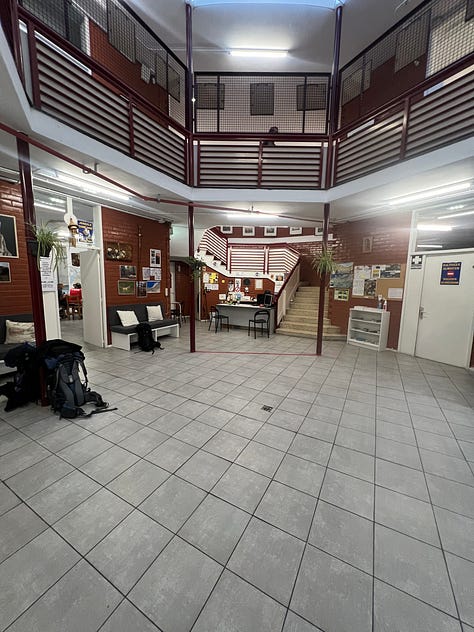
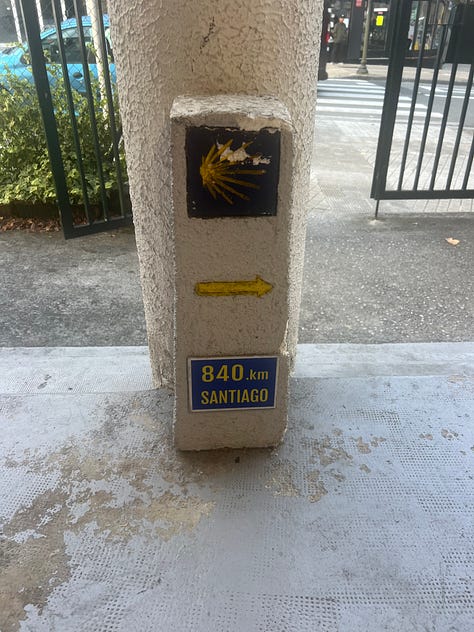
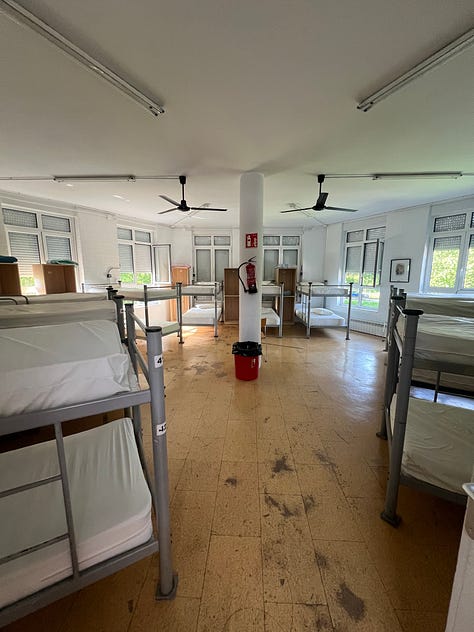
Camino Pt 1: Basque Country
127 miles | 6,025 meters (19,767 feet) of gain | 7 days
Irun - San Sebastian - Zarautz - Deba - Markina - Pozueta - Bilbao - Pobeña
Irun - San Sebastian - 17 miles
The albergue had the lights on at 6:00 am and I was up and excited to get moving. That being said, as it was my first official morning, the getting ready process took quite a long time. Figuring out the shuffle of packing away my toiletries, clothes, blanket, thinking I have it all done only to realize I forgot to fill my water bladder which needs to go in prior to my other items… so I repack my backpack again. I also had the added excitement of realizing I didn’t pack any sports bras with me… but luckily had a active/swimsuit top to suffice for the day.
Some albergues provide breakfast and when I headed into the eating area around 6:30, I quickly learned that means some white bread, jam and maybe a piece of fruit. Not the most filling but I ate a few pieces of toast, took an apple to go and was excited to start day 1!
Learning point #3: Bring Snacks
Everyone was piling out of the albergue at different speeds so its kind of one long line of hikers. As someone who has never done a thru hike before, its kind of a funny feeling to start walking and realize you won’t be back where you started that day. I had my buen camino app pulled up, knew how far I had to go, knew there was a map if needed and started to follow the yellow arrows.
I was out of the residential area and into fields and farmland pretty quick - the morning light + animals around was so peaceful and I remember thinking to myself “yeah I can do this.” That thought slipped my mind a few miles in when I hit what I would consider the steepest climb of the entire Camino which felt a bit like a rock climb scramble in parts with a heavy backpack to carry but I made it through. The rest of the day wasn’t too hard and I was so taken aback by the scenery surrounding me that time flew by. Descending into San Sebastian, a cute, coastal surf town where I would spend my first night, was so incredible and I felt very accomplished of myself. I had never hiked 17 miles before and it was only day 1.
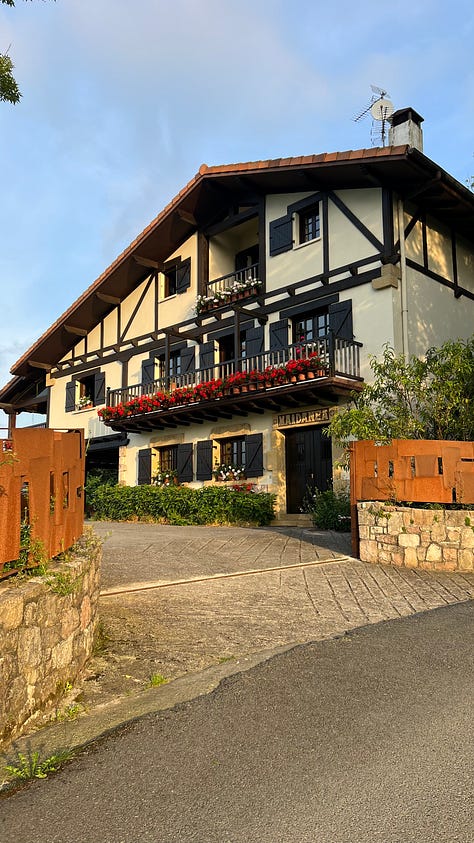
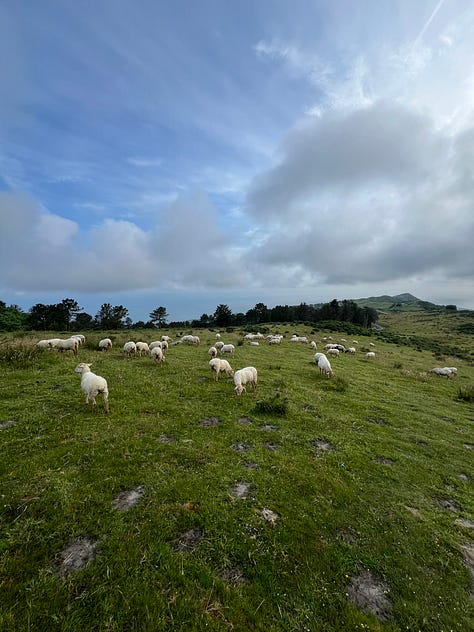
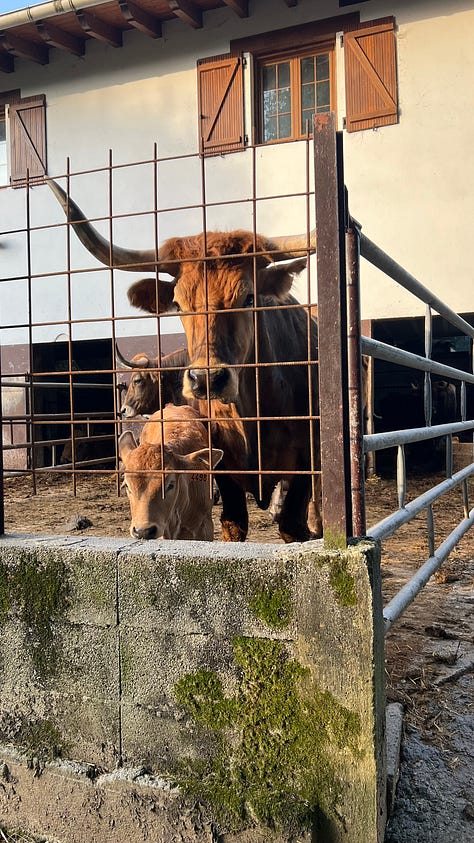
To be honest, I don’t know who I thought I was racing, but besides stopping for a brief lunch and taking a pit stop to eat my apple, I didn’t take any breaks throughout the day. I wore trail running shoes as that was what was recommended by pretty much every blog out there, but forgetting that I have extremely high arches that are due to over pronate combined with uneven terrain and a mere 750 meters of elevation that I decided to power through, my calves were pretty mad at me by the end of the day. So much so, that by the time I got to my hostel I physically could not walk as my entire right calf seized up and it took an hour and a half of massaging and scraping the muscles to get it to loosen up.
Learning point #4: It’s okay to take breaks
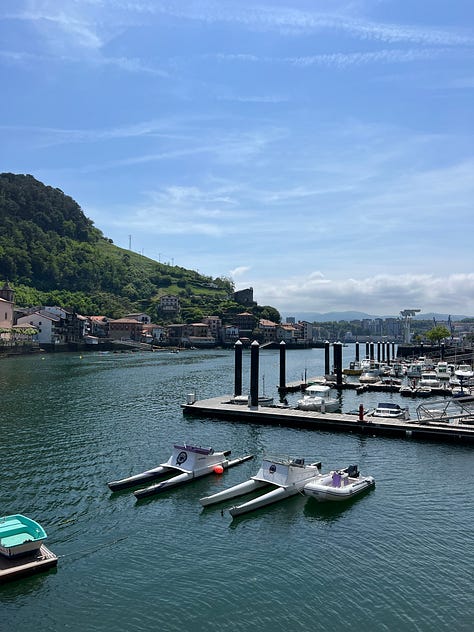
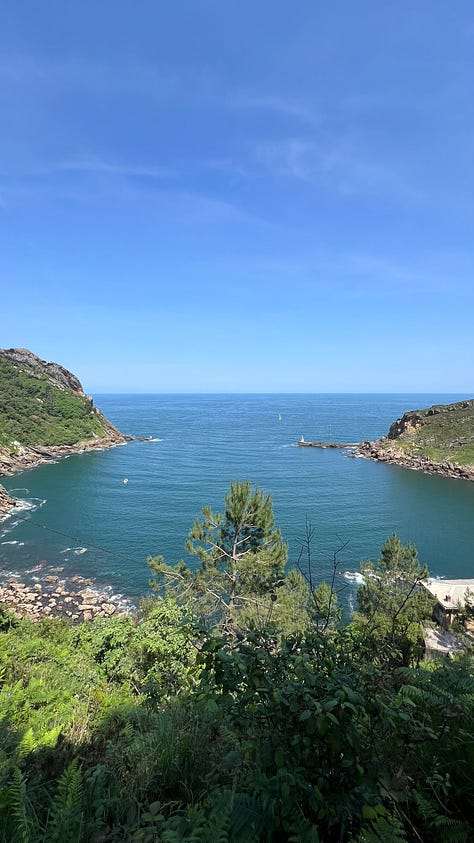
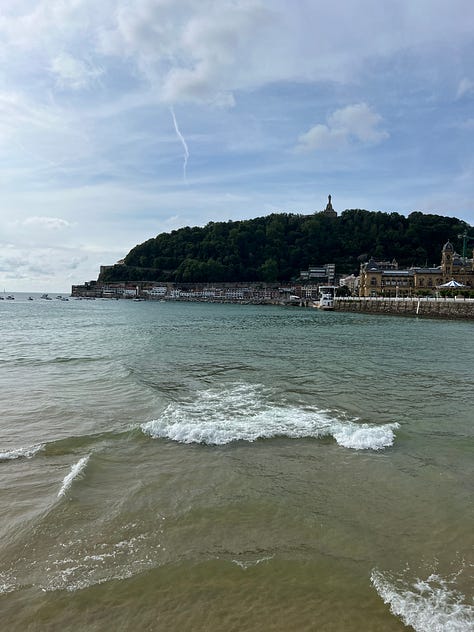
Once I was thankfully able to walk again, I spent my evening attempting to do hand laundry (miserable fail), eating the largest pizza I could get my hands on, and finding a sporting goods store to buy some new sports bras. I had in my head that I wanted to be out the door by 7 the next day and knowing it would take just as long to pack my bag, I hit the hay early with absolutely no issue falling asleep after a long and eventful first day.
San Sebastian - Zarautz - 16 miles
I walked the first day entirely on my own, which was fine with me. As much as I wanted to meet people, I flew to Spain knowing I might walk the entire Camino on my own. Luckily, that changed two miles into the second day when I stopped to admire a viewpoint, and a girl my age walked by and said hi.
Cue: Ana. Bless her soul for asking if I wanted to walk with her for a bit because we spent the entire day together—and the next 30 days after that, until we reached Santiago. Ana is two years younger than me, originally from Poland, but at the time living in Edinburgh. She had just graduated from the University of Edinburgh and was taking some time for herself between final exams and graduation (a foreign concept to me, the American, where graduation is basically two days after finals). She's also a triathlete, close in height which is great for walking together, and an incredible listener (I think I talked her ear off after spending the first day in complete silence by myself).
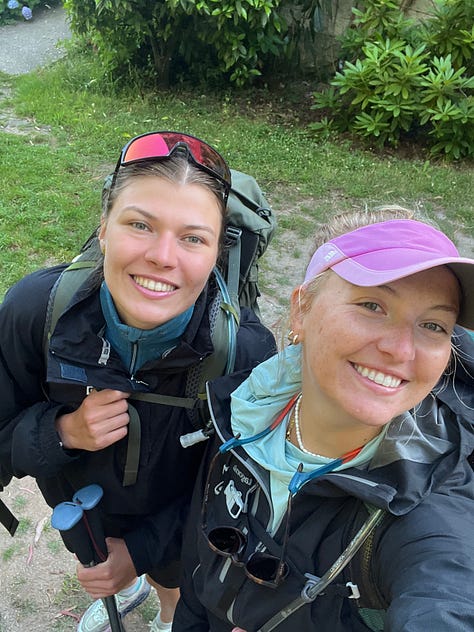
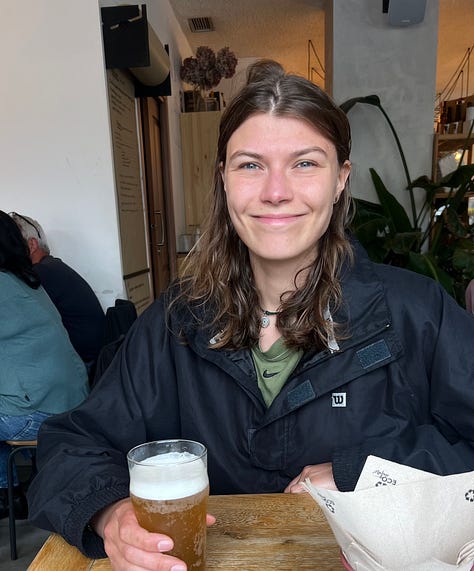
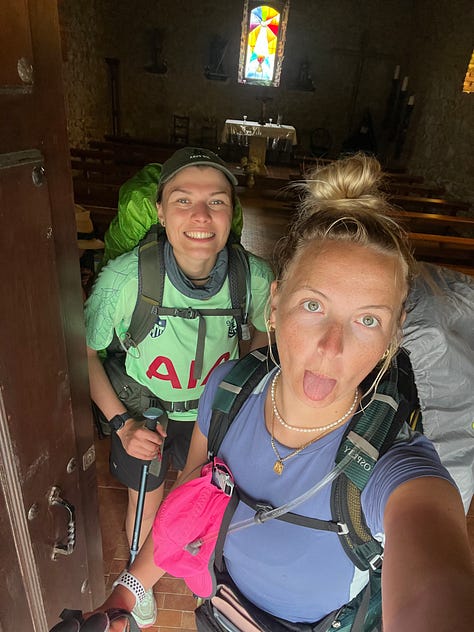
The day consisted of steady climbing, farm animals, and our first drizzle of rain—enough for me to put on my raincoat and cover my backpack (probably overkill, but hey, we were new to this). We stopped for a DIY lunch at a grocery store— turkey sandwiches, pastries, and I finally stocked up on snacks. Ana introduced me to digestive crackers/cookies (a debate that never got settled) and a few other goodies. The tricky part about snacks is balancing the fine line of what’s necessary and what adds too much weight to your backpack.
We reached Zarautz in the early afternoon, dropped our bags at our respective albergues (after my panic in Irun, I had pre-booked mine, which was fully booked when Ana tried), and headed out to explore. Here’s what we learned: 1) They were setting up for a local triathlon—small world! Ana and I have already decided we’ll come back one day and do it together. 2) The weather was nice enough that we decided to hit the beach. 3) It was high tide, and we quickly got soaked enough to leave.
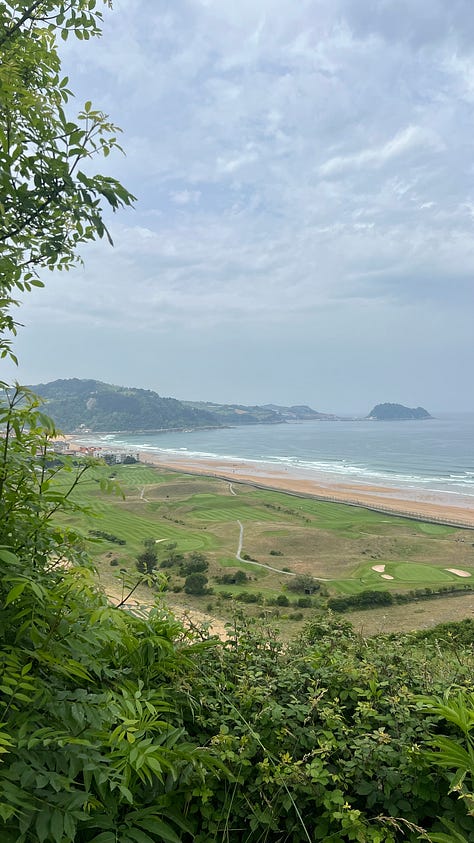
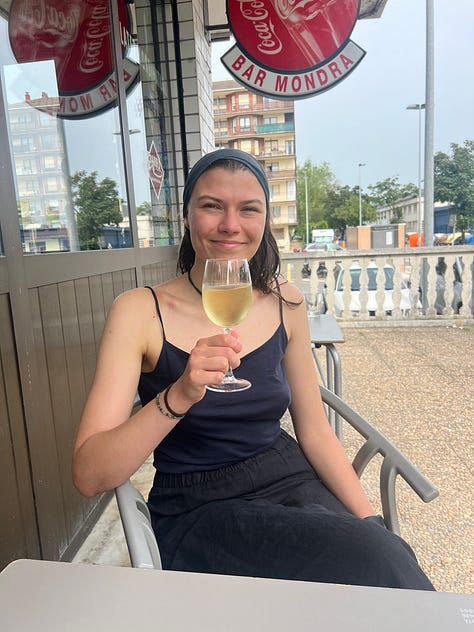
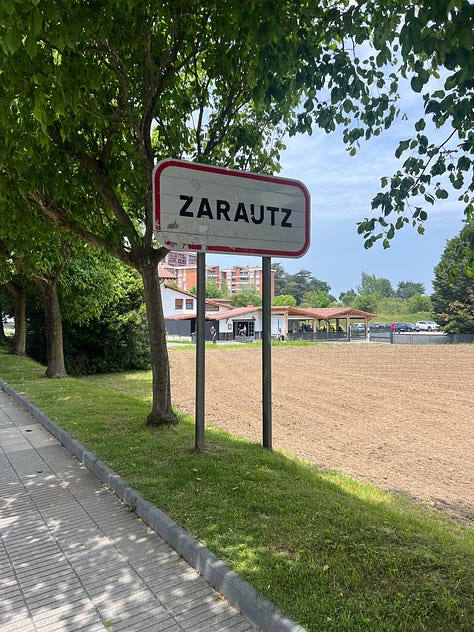
We ended up at the dive-iest of dive bars, sipping on €1.50 glasses of wine, accidentally ordering two large plates of green olives (thanks to our broken Spanish), and waiting for kitchens to open for dinner.
After a great day of walking and an afternoon/evening of laughter and conversation Ana and I decided we’d walk together again the next day.
Learning tip #5: Meet new people
Zarautz - Deba - 16 miles
We had two options to reach Deba: the shorter, easier road-walking route or the longer, more difficult coastal route. Naturally, we chose the coastal route. This was also our first official “bed-chasing” day, meaning there were 56 beds at the public albergue, first-come, first-served. Doors opened at 3:00 p.m., so we figured as long as we were there close to that time, we would be fine.
Everything seemed great as we grabbed a pastry and watched the local triathlon being set up on our way out of town. The weather was beautiful, and we were making good time. After making the cut-off to the coastal route, it was just Ana and me the rest of the day. We’d been warned this route was one of the hardest, and while challenging, I still think Day 1’s “mountaineering” climb was tougher. Thankfully, the fog and drizzle kept it cool, and having each other for company helped us push through.
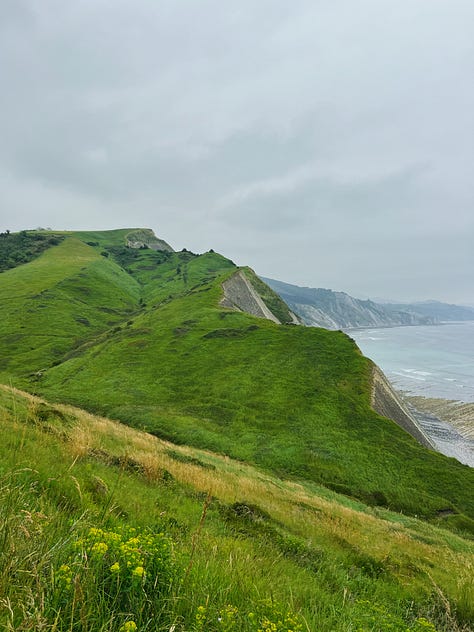
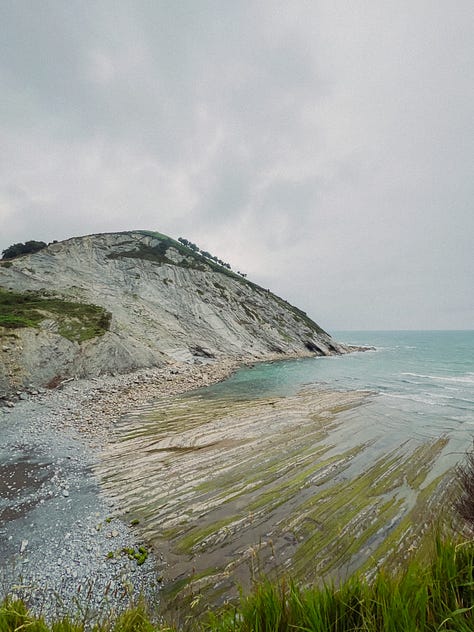
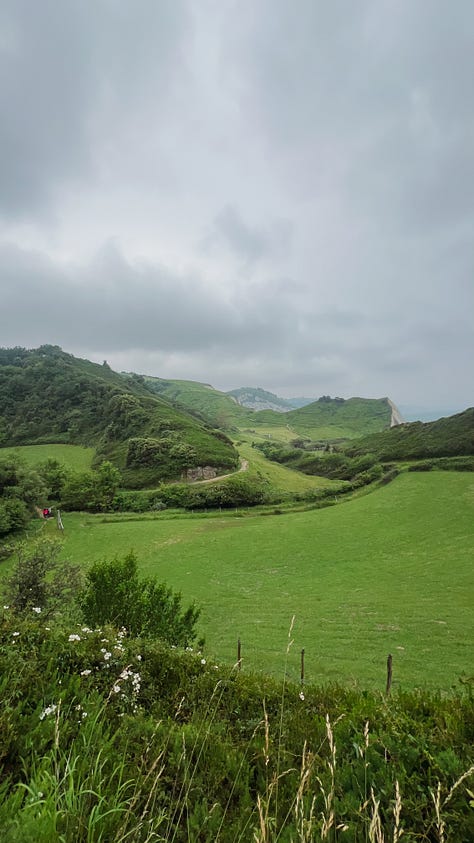
Unfortunately, the constant up-and-down of the coastal route had my feet screaming, and although we seemed to be at a good pace, our timing got away from us, meaning we couldn’t take too many breaks. By the time we reached town, the rain had come in, and we had to descend the slipperiest, moss-covered hill I’ve ever experienced. I could barely walk but I was hobbling the best I could to reach the town’s info office around 3:30, where we were required to check in for the albergue, and thank god we made it because we snagged beds #49 and #50 out of the 56.
On the bright side, we had extremely hot showers and even access to a washer and dryer for our smelly wet clothes (thanks to a kind Austrian man who spoke zero English but wanted to share the dryer costs with us—luckily, Ana speaks German (as well as Polish, English, Chinese and Spanish)).
Learning Tip #6: Actually learn another language (my Spanish skills from 8 years ago were beyond lacking).
We were starving by 5 p.m., but no kitchens opened until later, so we settled for a grocery store dinner, ate under a tree to hide from the rain, and went to bed early—exhausted from our race to town.
Deba - Markina - 12 miles
By this point, Ana and I had pretty much silently agreed to keep walking together every day. We hadn’t seen many people our age, but we had formed a small collection of “friends” along the way. Although older than us, mostly parents of people our age, retired folks, teachers on summer holiday, and a few Camino veterans, they were always looking out for us, the two tall girls in their mid-20s.
One Camino vet, a man from Catalonia, told me there was another American guy around our age staying in his room at the albergue and that we should meet him. No other information than that and he went on his way. Laughing, Ana and I headed out into the rainy Sunday morning but sure enough, a couple miles in, we met said American guy, who would later become the third member of our forming friend group.
Cue: Erik. A sociable Swedish-American from Colorado who’d spent the last year teaching English in Spain and was now hiking the Camino since the school year had ended. Known for his bleached blonde hair (due to a lost bet) and colorful wardrobe, Erik seemed to already know way more pilgrims than we did. A mountain-loving, yoga-doing, philosophical great conversationalist, we all walked and talked all day getting to know one another and adding ourselves to his known-pilgrim repertoire.
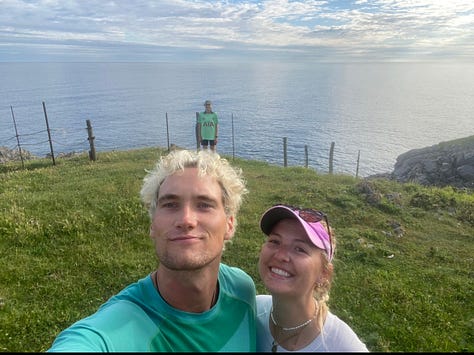
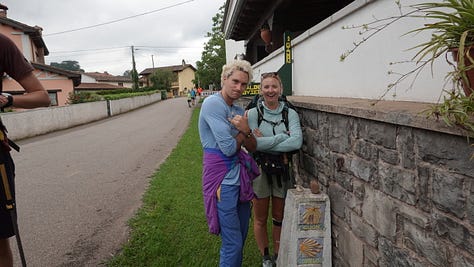
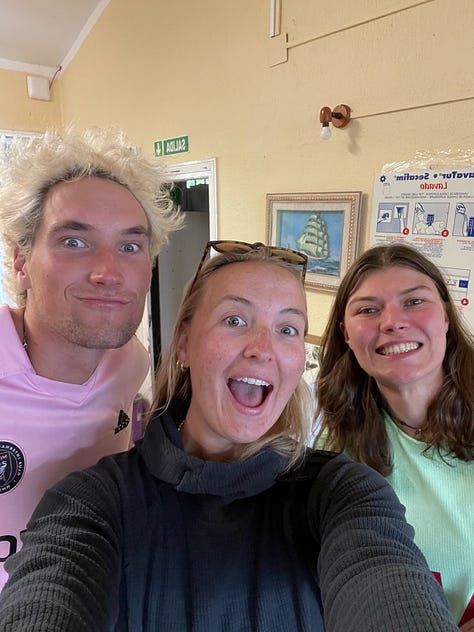
We had planned to stop for lunch about six miles into the day but found two things: 1) We reached the spot at 9:30 a.m. 2) It was Sunday meaning said lunch destination wasn’t going to open anyways. So, we pooled our meager snack supplies, ate what we could, and powered through the next 10 miles without a proper meal. Despite the mud and rain, we kept moving, and I may have fallen on my butt a couple of times, but nothing I couldn’t hop back up from. We even met a local man on a walk with his dogs and chatted and played fetch for a good hour of our day as we continued towards town.
Learning point #7: Everything is closed on Sundays
We made it to town by 2 p.m., dropped our bags outside the albergue to queue for beds, and found a restaurant with a huge pilgrim’s menu to satisfy our hunger. When 3:00 rolled around and we headed to albergue check-in, Ana and I found ourselves saying goodbye to Erik, as he planned to walk another three miles to meet up with some other folks. Without knowing if we would ever see each other again, we exchanged phone numbers and headed our separate ways.
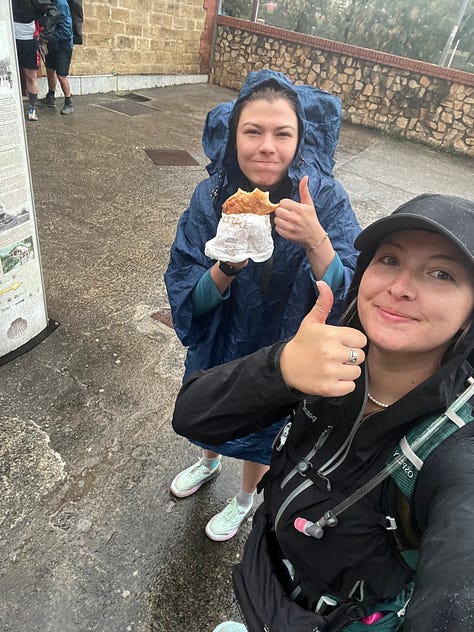
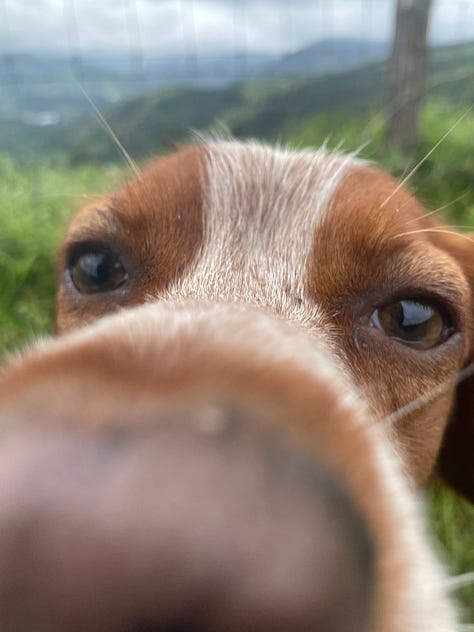
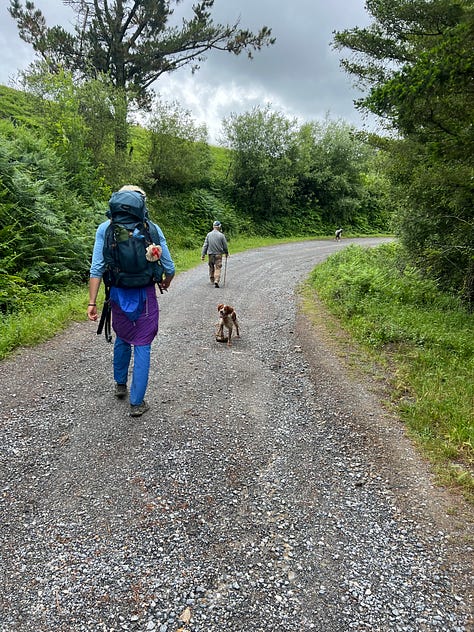
Little did we know, Erik made the right call because this was probably the worst albergue we stayed at the entire Camino. My feet were killing me, and while we were happy to be done walking, the place was bare-bones, and we were packed in like sardines in the basement of a church.
Learning Point #8: Do more research on albergues
Evenings were starting to follow a routine. We washed our muddy clothes, found a laundromat to dry them (since they wouldn’t dry in the damp church basement), ate a simple dinner, and passed out early to avoid the snorers—a hack because if the loudest snorers fall asleep first, no pair of ear plugs can block out some of those nose trains.
So four days in… and although I am not much speedier at packing my backpack, I finally felt as though I was getting in the groove of things.



